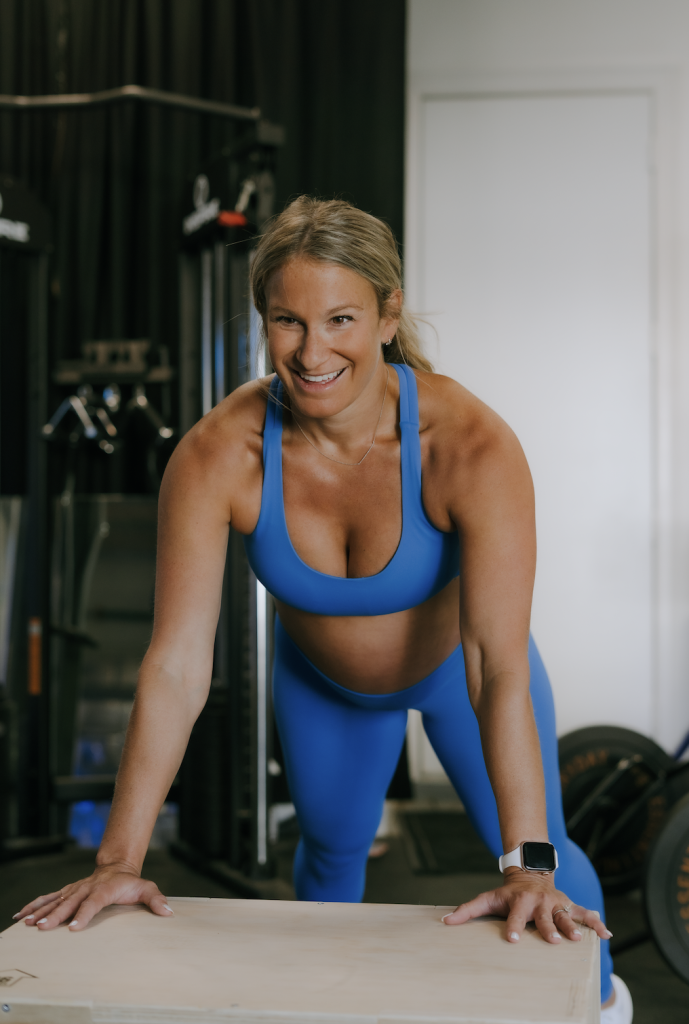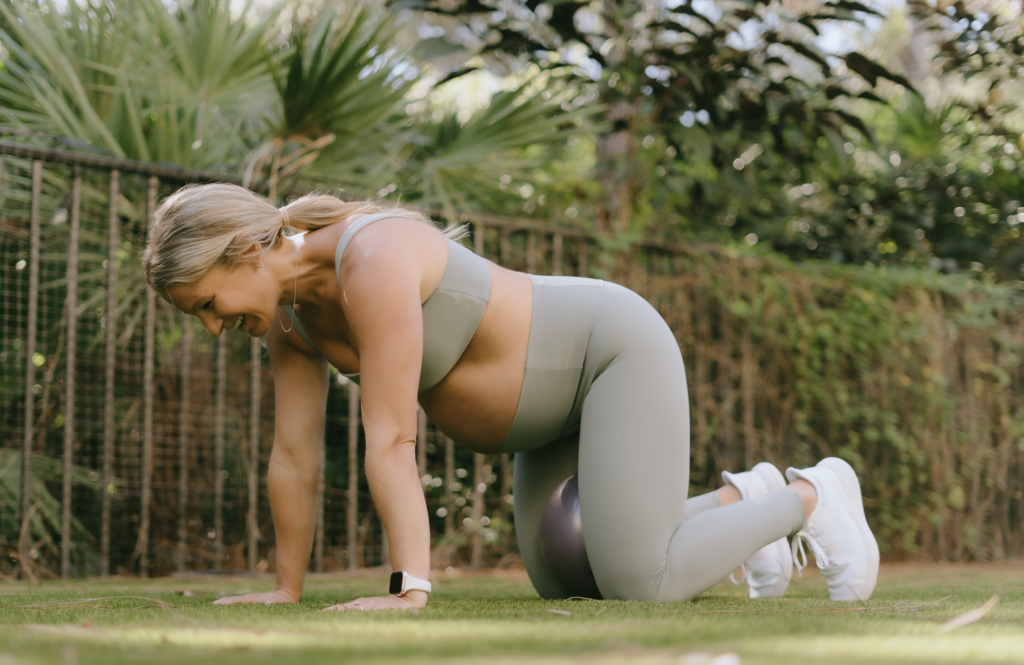Working out your Core
When Pregnant
What Exactly Is
Core
We hear a lot of “pregnancy safe exercises” and avoid core at all costs during pregnancy, but this couldn’t be further from the truth.
When mamas become pregnant, the influx of anatomical, structural, and hormonal changes can impact the function of her core and pelvic floor, so it’s so important to learn how to turn on the different parts of our core that are important while growing a baby as well as postpartum, starting with our deep core system: our transverse abdominals (abs that are right where your seatbelt go across), internal obliques, pelvic floor, diaphragm, and multifidus. By learning how to turn on each part of our core, they are able to support the midline and pelvic floor, while also utilizing it to initiate movement and manage pressure properly and stabilize their spine, preventing low back pain and pelvic girdle pain

1. Anti-Rotational Movements
such as plank variations with correct pressure management and pallof presses, help distribute tension and give feedback where tension is being held
2. Anti-lateral movements
such as carry variations with marching, help indirectly train pelvic positioning and put stress on the midline to help increase tissue density by putting stress on the midline correctly.
3. Rotational movements & Exercises targeting obliques
such as plank variations with correct pressure management and pallof presses, help distribute tension and give feedback where tension is being held
4. exercises that target transverse abdominals
Our deep core system turns on before we initiate movement, which is why we need to train it to teach it HOW to turn on and what it feels like in order to maintain and manage pressure correctly and breathing appropriately helps do this as well as helps stabilize the spine and pelvic girdle and avoid low back pain or pelvic pain.
The transverse abdominals (or TVA) are your deep core muscles that go around your hips and connect to your pelvic floor, basically where you would your strap a seat belt around your waist. Learning to both relax & strengthen by coordinating your transverse abdominals and your pelvic floor is crucial for postpartum recovery because of the trauma that has happened to your pelvic floor from growing and birthing a baby, no matter what method was used to get baby out safely. Because your pelvic floor is weakened, these low core muscles must be strengthened in order to support your pelvic organs such as your uterus, bladder, and rectum, and provide stability to your pelvic floor overall. These muscles also utilize the same nerve roots, so as you activate your TVA, your pelvic floor activates in conjunction as well and vice versa. Because they also support the lumbar spine, when we don’t utilize these low core muscles and repair postpartum, many ailments and complications can occur such as low back pain, pelvic pain, urinary incontinence, pelvic organ prolapse, and other issues. Incorporating these exercises into your routine as soon as you feel ready to postpartum is key, and even if you’re years postpartum and haven’t fully repaired the strength of your TVA, it’s never too late to start!
Why is working your core
Essential?
When you have a coordinated core system, you are able to lengthen and shorten through a full range of motion, both consciously and subconsciously in response to task and demand. Coordination needs to be consciously trained, so it can be subconsciously applied to movement and function. Because of this, we must consciously and purposefully train our core to help both with strength training and everyday movement safely and effectively with no discomfort or ailments when growing a baby!
Some of my favorite cues to help activate TVA:
- Encourage drawing in, actively contract muscle and reprogram motor system
- “Try to imagine your drawing in your abdomen away from your underwear/pants”
- “Pretend your belly button is lower, and see if you can get your belly button can come in towards your spine”
- “Now lets extend that contraction higher up without getting a lot of the upper abdomen coming in” and being able to release
